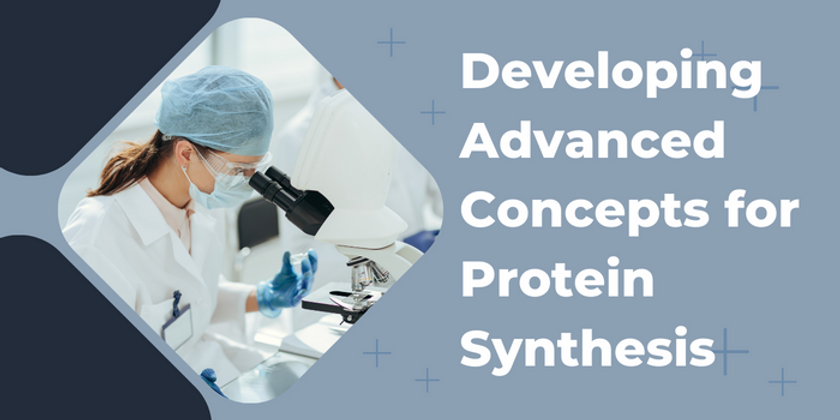Developing Advanced Concepts for Protein Synthesis
Jan 9th 2023
DNA acts as a "blueprint" for the physiology and structure of cells. This is because DNA has the knowledge required for the cell to construct the protein. Almost all of a cell's tasks are carried out with the help of proteins, which make up most of the structural components of the cell.
For cells to operate properly, they need a complex and tightly controlled process called protein synthesis. This is the process through which cells create proteins and a crucial mechanism for defining cell shape and function. The cells use genetic information stored in DNA to synthesize new proteins. This article discusses what is the purpose of protein synthesis and highlights several advanced concepts for protein synthesis.
What is protein synthesis?
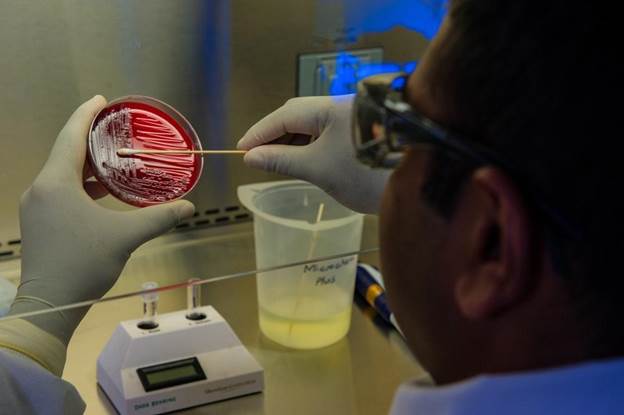
Protein synthesis, also known as protein biosynthesis, is a fundamental biological activity that takes place inside cells to counteract the loss of existing proteins by producing new proteins. Proteins are large, intricate molecules that play several vital functions in the body. They are crucial for constructing, operating, and controlling the body's tissues and organs and carry out most of their job inside cells.
The protein synthesis process occurs in two steps: translation and transcription. The genetic information in DNA is first transcribed into RNA, which is subsequently translated into a precise sequence of amino acids to produce a protein.
Transcription
This process entails using the data in DNA to create a corresponding RNA molecule. It creates a single-stranded RNA molecule complementary to one strand of the DNA double helix. The enzyme reads the DNA code during the process.
In transcription, an enzyme known as RNA polymerase reads the DNA code during RNA replication and creates a corresponding RNA molecule. The DNA strand's information is copied during this phase to produce a specific protein molecule. An mRNA strand is created during transcription to complement a particular DNA fragment.
The process starts when a complementary RNA molecule is created from the DNA instructions for a certain protein. This entails protein complementing the molecule. The ribosomes then carry this RNA molecule from the nucleus to the cytoplasm, where it is converted into a protein.
Many RNA enzymes employ RNA replication to copy their RNA. Messenger RNA is the name of the RNA molecule created during transcription (mRNA). A group of proteins known as transcription factors control the transcription process by attaching to the gene sequence and either promoting or inhibiting transcription.
Translation
The codons on an mRNA strand must be converted into the amino acid alphabet of proteins. Translation starts when transcription and the subsequent processing are finished. Here, the genetic code of the freshly synthesized mRNA is decoded and utilized to form protein molecules. Translation describes the process of translating mRNA information into an amino acid sequence. It takes place on the ribosomes and is carried out by the enzyme ribosomal RNA and tRNA. These ribosomes read the mRNA's nucleotide sequence and utilize this data to create the protein.
RNA is crucial to protein synthesis since it acts as a template for creating proteins. RNA translation is the process through which RNA is employed to generate a protein. It entails translating the RNA's nucleotide sequence into the protein's amino acid sequence. During translation, a different form of RNA called tRNA reads the RNA molecule in units of three nucleotides known as codons. The right amino acid is brought to the ribosome and inserted into the expanding protein chain by tRNA molecules.
The tRNA transports the correct amino acid to the ribosome, where the protein is created. The protein starts to fold into its three-dimensional form as the tRNA continues to add amino acids to the lengthening protein chain. Each tRNA molecule contains an anticodon for its particular amino acid. A corresponding codon for the amino acid exists for each anticodon. As a result, the mRNA strand may carry the amino acids in the precise order for tRNA to transport them.
Where does protein synthesis take place?
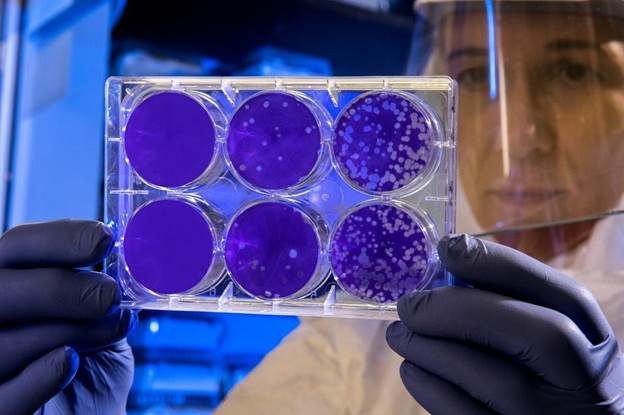
This is an essential process in the cells of living organisms. Particularly, it occurs in the ribosomes, which are tiny organelles inside cells. The procedure produces new proteins that are needed for a variety of essential bodily activities.
In chemical synthesis peptide bonds create the protein from individual amino acids. Using this technology, you can create small proteins, but you can't produce bigger ones because of the required time and expense.
What is the purpose of protein synthesis?
Custom protein synthesis refers to creating a specific protein on demand based on a provided amino acid sequence. It entails planning a specific amino acid sequence and using that knowledge to manufacture the protein using various methods. Scientists can use custom protein synthesis to make proteins for pharmaceutical research and other commercial uses. It also manufactures proteins for several purposes, including research, drug development, and commercial applications.
You must know the site of protein synthesis to understand the whole process. Scientists create proteins in several ways, such as cell-free protein synthesis, solid-phase peptide synthesis, and solution-phase peptide synthesis. The choice of technique will rely on the protein's particular needs, as each process has benefits and drawbacks.
In cell-free protein synthesis, proteins are created in a reaction mixture utilizing a cell extract. You can create any size of protein using this process. However, the yield is often lower than it would be using another technique.
Recombinant proteins are increasingly in demand for biological research. The creation of recombinant proteins through recombinant protein production is a crucial step in the study of life sciences and the creation of biotherapeutics. For scientists researching the structure and function of proteins, custom protein synthesis can be a helpful tool since it enables the production of certain proteins for testing. Protein engineering, structural biology, and other scientific and industrial fields use custom protein synthesis.
During custom protein synthesis, the protein of interest is expressed in cells by inserting the gene encoding it into a host cell, which will then produce the protein. This technique is frequently used to create huge amounts of protein and can be carried out using a variety of cell types, including bacterial, yeast, and mammalian cells. During the process, ELISA kits are commonly used to detect antibodies in the blood.
Advanced Concepts Related to Protein Synthesis
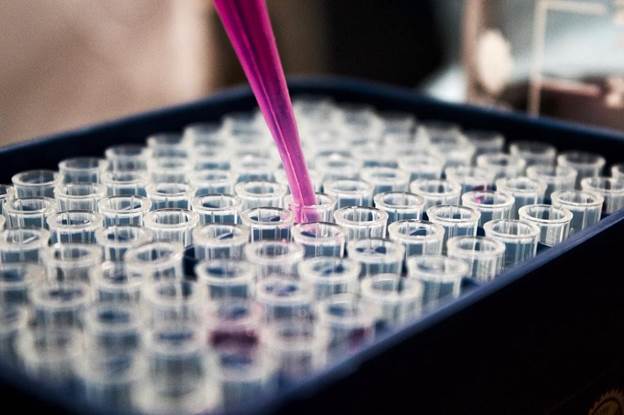
Now that you understand the protein synthesis process, it’s essential to understand the advanced concepts in protein synthesis. It is an important part of the protein synthesis webquest key. There are several advanced concepts related to protein synthesis.
Genetic Code
This concept describes the principles that control the nucleotide order in DNA and RNA. It refers to the guidelines that control how the DNA's nucleotide sequence is converted into the amino acid sequence of proteins. You must understand how many amino acids are common in all living systems.
Codons, three-nucleotide sequences that correspond to specific amino acids or stop signals, make up the genetic code. The genetic code is read in units called codons starting at a predetermined position in the DNA sequence. Every codon designates either a specific amino acid or a stop signal. The amino acids' order in a gene's codons dictates the order of the corresponding protein's amino acids.
This is a universal code, which means that all species share it. The genetic code varies somewhat between species, but these changes are uncommon and don't impact the genetic code's general functionality.
Gene Expression
Genes are where protein production starts. A gene carries the genetic instructions to make a protein. Each specific gene supplies the instructions needed to create a specific protein. A gene is the DNA nucleotide sequence that dictates the arrangement of amino acids in a protein.
The protein expression service controls protein production, which converts the data encoded in a gene into a final gene product, ultimately determining the structure and function of a cell. A gene provides the code for creating a whole protein with several amino acids in the correct order. It comprises several triplets in a distinctive sequence.
Transcription is the first step in gene expression. It describes the production of an mRNA strand complementary to the target gene. However, you can also reverse translate, a concept that takes a protein sequence as input and creates a DNA sequence that represents the most likely non-degenerate coding sequence using a codon use table. Reverse translation biology is an essential component of protein synthesis.
Ribosome Structure and Function
Ribosomes are the biological components responsible for translating RNA into protein. They comprise proteins and ribosomal RNA (rRNA). Ribosomes read the information in DNA during protein synthesis and use it to create proteins by joining the proper sequence of amino acids. Specifically, the ribosomes read the nucleotide sequence in the RNA molecule and use it to produce the sequence of amino acids. Peptide bonds are subsequently used to link these amino acids to create a protein.
They comprise small and large subunits. The small subunit includes proteins that aid in synthesizing the peptide bond between amino acids. The large subunit contains the ribosomal RNA (rRNA) that reads the genetic code.
Protein synthesis occurs in the ribosomes, either in the cytoplasm or the endoplasmic reticulum of the cell. It starts when ribosomes bind to an mRNA molecule. The molecule then transports the protein's genetic information from the nucleus's DNA to the cytoplasm's ribosomes.
After reading the mRNA's coding, the ribosomes employ it to create the protein by gradually adding amino acids to the expanding chain. The ribosomes release the finished protein once it is ready, allowing them to go on to the next protein.
Genetic Mutations
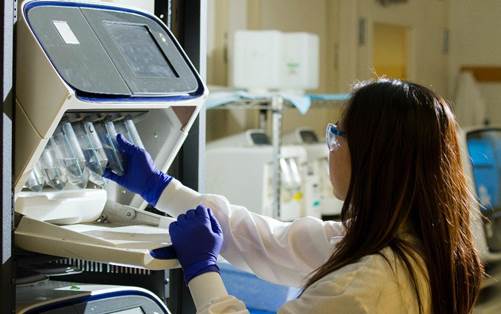
This term describes changes to the DNA sequence that may impact protein production. While particular mutations may produce harmful or dysfunctional proteins, others could have no impact. During protein synthesis, the genetic information contained in DNA is translated into RNA, which is subsequently converted into protein. A change in the DNA sequence can impact the RNA molecules produced from it, affecting the proteins translated from the RNA.
Genetic mutations can take many forms and impact protein production. While specific mutations can produce proteins with slightly altered sequences, others might cause the generation of inactive or nonexistent proteins. Some mutations may not impact protein production, while others may have adverse effects that are detrimental to the organism.
External factors like radiation or chemical mutagens can cause genetic mutations. Alternatively, they can happen spontaneously because of DNA replication or repair mistakes. Understanding how genetic mutations affect protein production is crucial in genetics and molecular biology because it can shed light on the underlying causes of genetic illnesses and aid in developing drugs.
Start and Stop Codons
Codons and anticodons are essential elements in protein synthesis. Codons are triplets of nucleotides that designate a specific amino acid, while anticodons are complementary nucleotide sequences that bind to codons. During the process, the start and stop codons are unique nucleotide sequences crucial for protein production.
The start and stop codons show the beginning and end of custom protein synthesis protein synthesis company, respectively. These are unique sequences of nucleotides in mRNA. AUG is the start codon for protein synthesis, whereas UAA, UAG, and UGA serve as the stop codons. Codon optimization helps deal with uncommon codons. Here, you maintain the amino acid sequence of a transgene while replacing the rate codons with the common ones.
Start codons are unique sets of nucleotides that signify the beginning of protein production and the start of a gene. AUG (adenine-uracil-guanine), which designates the amino acid methionine, is the most prevalent start codon.
Contrarily, stop codons are unique nucleotide sequences that indicate the end of a gene and the cessation of protein production. Uracil-adenine-adenine (UAA), uracil-adenine-guanine (UAG), and UGA are the three-stop codons (uracil-guanine-adenine). These codons instruct the ribosome, the molecular mechanism that performs protein synthesis, to cease adding new amino acids to the lengthening protein chain instead of specifying a specific amino acid.
Post-translation Modifications
All proteins undergo modifications after synthesis, including adding chemical groups like phosphate or acetyl groups or the proteolytic cleavage of specific amino acids. After a recombinant protein is created and translated from its associated mRNAs, they undergo chemical changes known as post-translational modifications (PTMs). They can have a range of reversible or irreversible impacts on the structure and function of proteins. Examples include acetylation, methylation, glycosylation, and phosphorylation.
This concept describes the insertion of chemical modifications to a protein after synthesis. It is crucial for controlling various biological functions, such as protein stability, signaling cascades, and protein-protein interactions. Post-translational modifications can alter the structure and function of the protein. These alterations may affect the protein's stability, location, or function.
Protein Folding
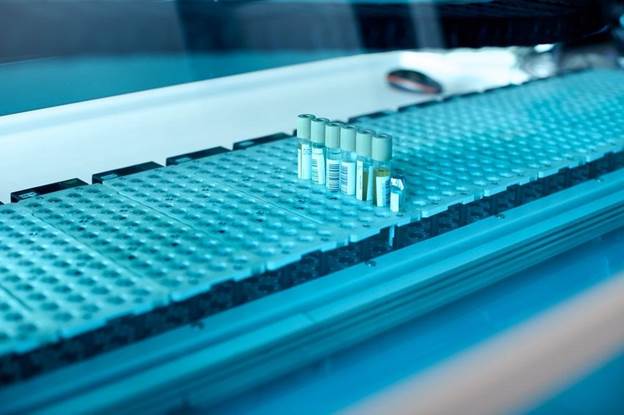
Following synthesis, proteins frequently go through a process known as protein folding when they take on their useful three-dimensional shape. Luckily, you can reduce protein folding through protein expression and purification.
Proteins have a limited shelf life, and the cell breaks them down and recycles them when they are no longer required or are damaged. Proteases and other enzymes are involved in the protein breakdown process.
Bottom Line
Whatever the biological mechanism, proteins are virtually certainly involved. A cell's proteome is its whole set of proteins, just as its genome describes the webquest DNA and protein synthesis. Transcribing DNA into RNA is the first step in protein synthesis. It then goes through translation to create a polypeptide, which is a chain of amino acids.
Understanding advanced concepts is essential in understanding protein synthesis and protein expression processes. It is critical to the proper functioning of cells and organisms. The progressive concepts in protein synthesis make it possible to create any required protein sequence, which speeds up drug development and testing.

